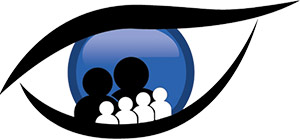Nearsightedness has risen dramatically over the last 50 years. If nothing is done to help slow the increase, half the world’s population may be nearsighted by the year 2050. That means much more than a lot of people in glasses. It means a lot of kids today are at risk of developing vision-threatening eye conditions tomorrow. That’s why the Alliance for Eye and Vision Research organized a Congressional briefing that will be livestreamed Wednesday, Oct. 20, from noon to 1 p.m. Eastern. The briefing is held in conjunction with the American Academy of Ophthalmology, the American Optometric Association, Research to Prevent Blindness, and the Association for Research in Vision and Ophthalmology.
People who have myopia, also known as nearsightedness, can see close-up objects clearly, but objects farther away are blurry. Myopia that begins in early childhood often worsens as the child grows. If these changes are too extreme, it can be hard to correct the blurriness with glasses or contact lenses and the risk of potentially blinding eye conditions rises, including retinal detachment, glaucoma, early cataracts and myopic maculopathy, a leading cause of blindness world-wide.
The socioeconomic impact is also devastating. Studies estimate that the global impact of uncorrected myopia results in a $244 billion annual productivity loss, while blindness from myopic macular degeneration results in a $6 billion annual productivity loss.
While more research is required to understand why myopia is on the rise, new treatment options are available to slow the disease in children so the most devastating consequences of high myopia can be avoided.
For more information – Nearsightedness is a Public Health Crisis (multivu.com)





 Closed until 9am
Closed until 9am
